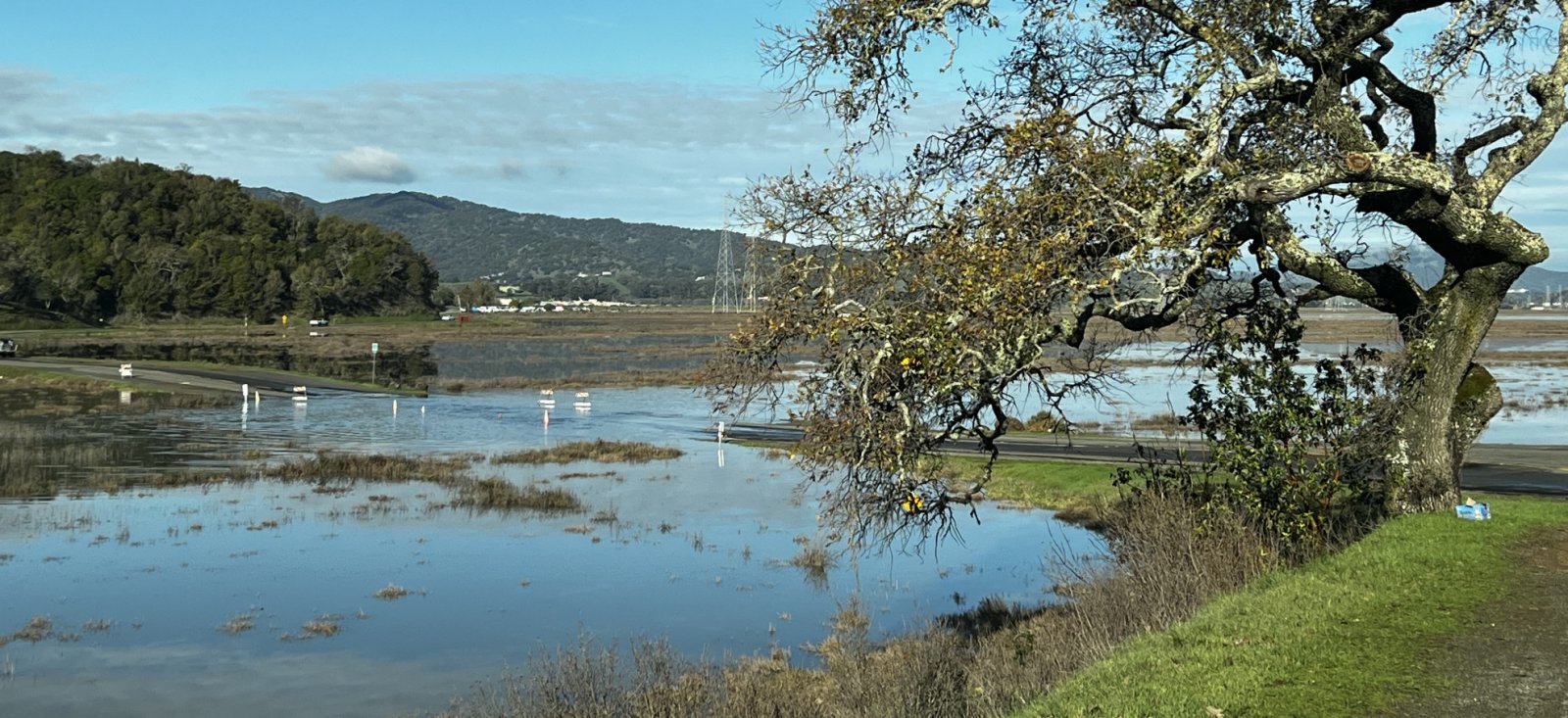
Answering critical questions about sea-level rise
China Camp study tracks how extended flooding can impact our salt marsh habitat
The following article was penned by Julie Gonzalez, a doctoral candidate at U.C. Davis and a Margaret A. Davidson Fellow with the San Francisco Bay National Estuarine Research Reserve. Here, Julie describes her current research at China Camp, which focuses on the impacts of flooding on salt marshes to understand what we can expect from future sea-level rise due to climate change.
Have you ever been to China Camp State Park during an extreme high tide? These events, called king tides, occur several times a year and are marked by exceptionally high water levels in San Francisco Bay.
At China Camp during these extreme tides, you’ll likely come across flooded roads and a salt marsh almost entirely underwater. These events are important to observe because they give us a glimpse of the kind of flooding we might expect with future sea-level rise.
Searching for the tipping point
Salt marshes like those found at China Camp State Park help offset the negative impacts of sea-level rise in numerous ways. For example, they protect the shoreline against erosion from waves. Plants in a salt marsh can also capture mud and allow the marshes to grow taller and survive, even as water levels rise. However, there is likely a tipping point of stress beyond which the plants cannot survive if marshes experience an increasing number of flood events or longer flood durations.
So what is that tipping point? How will the plants respond once that threshold is reached? What does that mean for the animals that rely on these plants for habitat? These are the questions that underpin my research. I’m interested in ecosystem-level responses to sea-level rise and flooding. That means trying to discover how plants, animals, and the physical environment—and interactions between all three—will respond to the stress of higher water.
“Marsh boxes” at China Camp simulate long-term flooding
To help answer these questions, I started an experiment at China Camp State Park to explore how flooding and sea-level rise will impact San Francisco Bay salt marshes. Using “marsh boxes” that hold water for an extended period of time after the tide goes out, I can simulate higher sea levels due to severe flood events or significant high tides.
My main research focuses on how plants respond, and how soil chemistry can change within these flooded boxes, relative to how plants and soils respond outside the marsh boxes. I’m also looking at how insects and tiny organisms in the soil respond to this simulated, long-term flooding. These small animals are an important food source for birds and other animals at China Camp, so what happens to these tiny organisms can impact the entire food chain.
I’m excited to share my results with fellow China Camp State Park enthusiasts as the experiment progresses. Stay tuned for updates on my research in future Friends of China Camp newsletters, and feel free to email me, Julie Gonzalez (gonzalez@ucdavis.edu) with any questions or comments.

